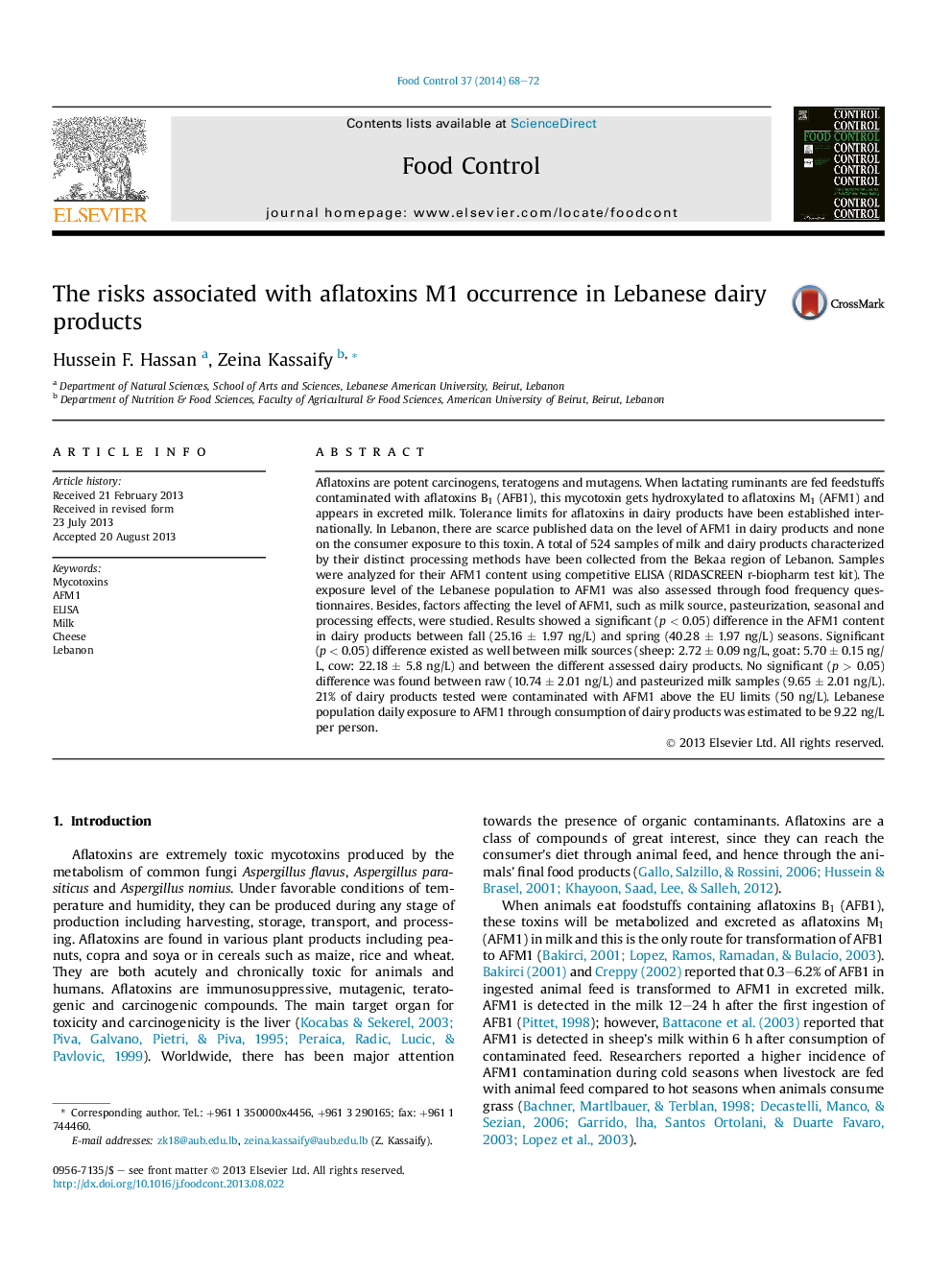| کد مقاله | کد نشریه | سال انتشار | مقاله انگلیسی | نسخه تمام متن |
|---|---|---|---|---|
| 6392174 | 1628425 | 2014 | 5 صفحه PDF | دانلود رایگان |

:
- No effect of pasteurization on the AFM1 levels in milk was detected.
- AFM1 contamination in spring was higher than in fall season.
- AFM1 in 20.7% of the dairy products exceeded the EU limits.
- AFM1 in soft cheeses were 2 times higher compared to the AFM1 in the milk.
- The daily AFM1 exposure in Lebanon is 9.22Â ng/kg of dairy product consumed/person.
Aflatoxins are potent carcinogens, teratogens and mutagens. When lactating ruminants are fed feedstuffs contaminated with aflatoxins B1 (AFB1), this mycotoxin gets hydroxylated to aflatoxins M1 (AFM1) and appears in excreted milk. Tolerance limits for aflatoxins in dairy products have been established internationally. In Lebanon, there are scarce published data on the level of AFM1 in dairy products and none on the consumer exposure to this toxin. A total of 524 samples of milk and dairy products characterized by their distinct processing methods have been collected from the Bekaa region of Lebanon. Samples were analyzed for their AFM1 content using competitive ELISA (RIDASCREEN r-biopharm test kit). The exposure level of the Lebanese population to AFM1 was also assessed through food frequency questionnaires. Besides, factors affecting the level of AFM1, such as milk source, pasteurization, seasonal and processing effects, were studied. Results showed a significant (p < 0.05) difference in the AFM1 content in dairy products between fall (25.16 ± 1.97 ng/L) and spring (40.28 ± 1.97 ng/L) seasons. Significant (p < 0.05) difference existed as well between milk sources (sheep: 2.72 ± 0.09 ng/L, goat: 5.70 ± 0.15 ng/L, cow: 22.18 ± 5.8 ng/L) and between the different assessed dairy products. No significant (p > 0.05) difference was found between raw (10.74 ± 2.01 ng/L) and pasteurized milk samples (9.65 ± 2.01 ng/L). 21% of dairy products tested were contaminated with AFM1 above the EU limits (50 ng/L). Lebanese population daily exposure to AFM1 through consumption of dairy products was estimated to be 9.22 ng/L per person.
Journal: Food Control - Volume 37, March 2014, Pages 68-72